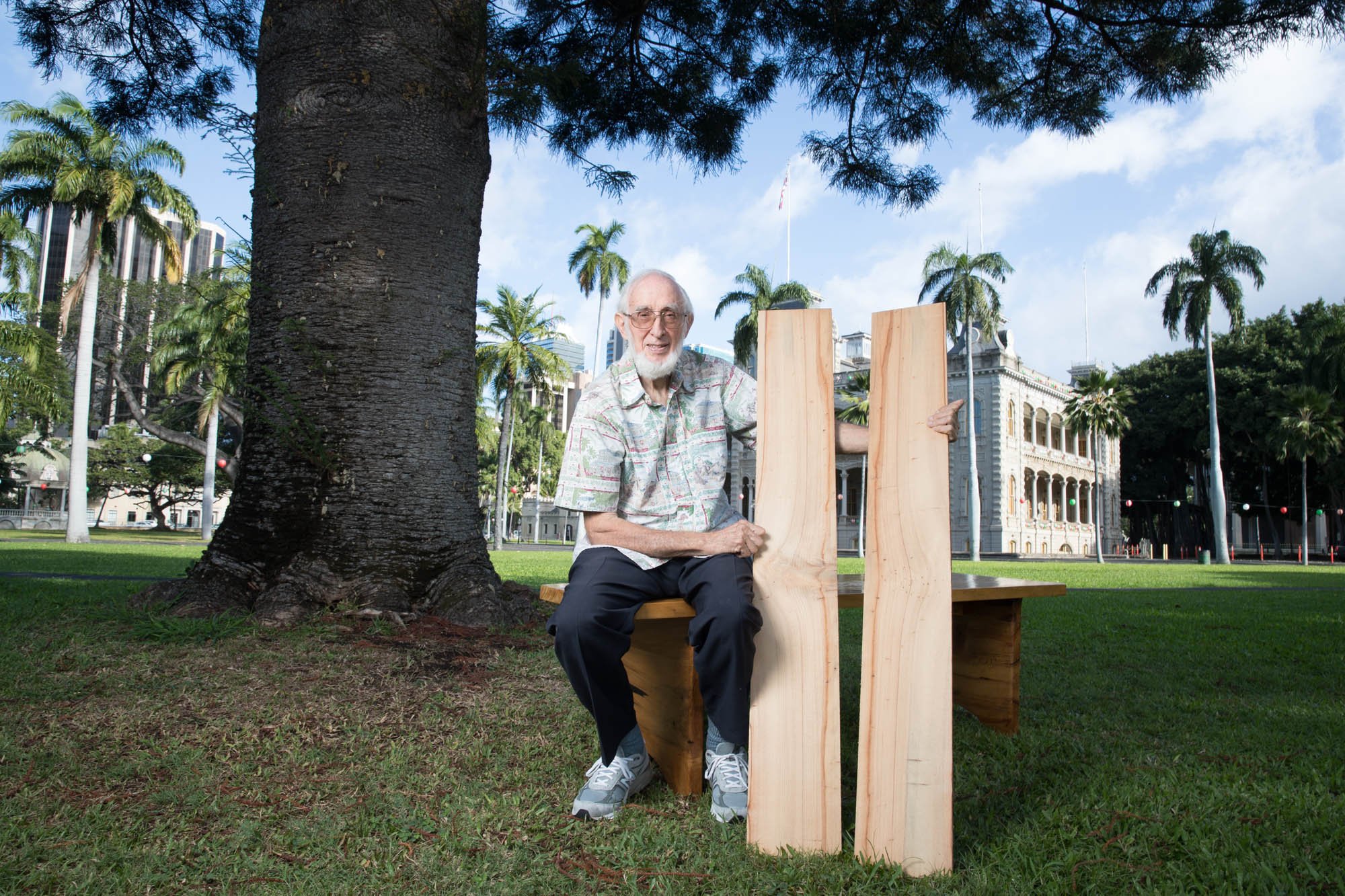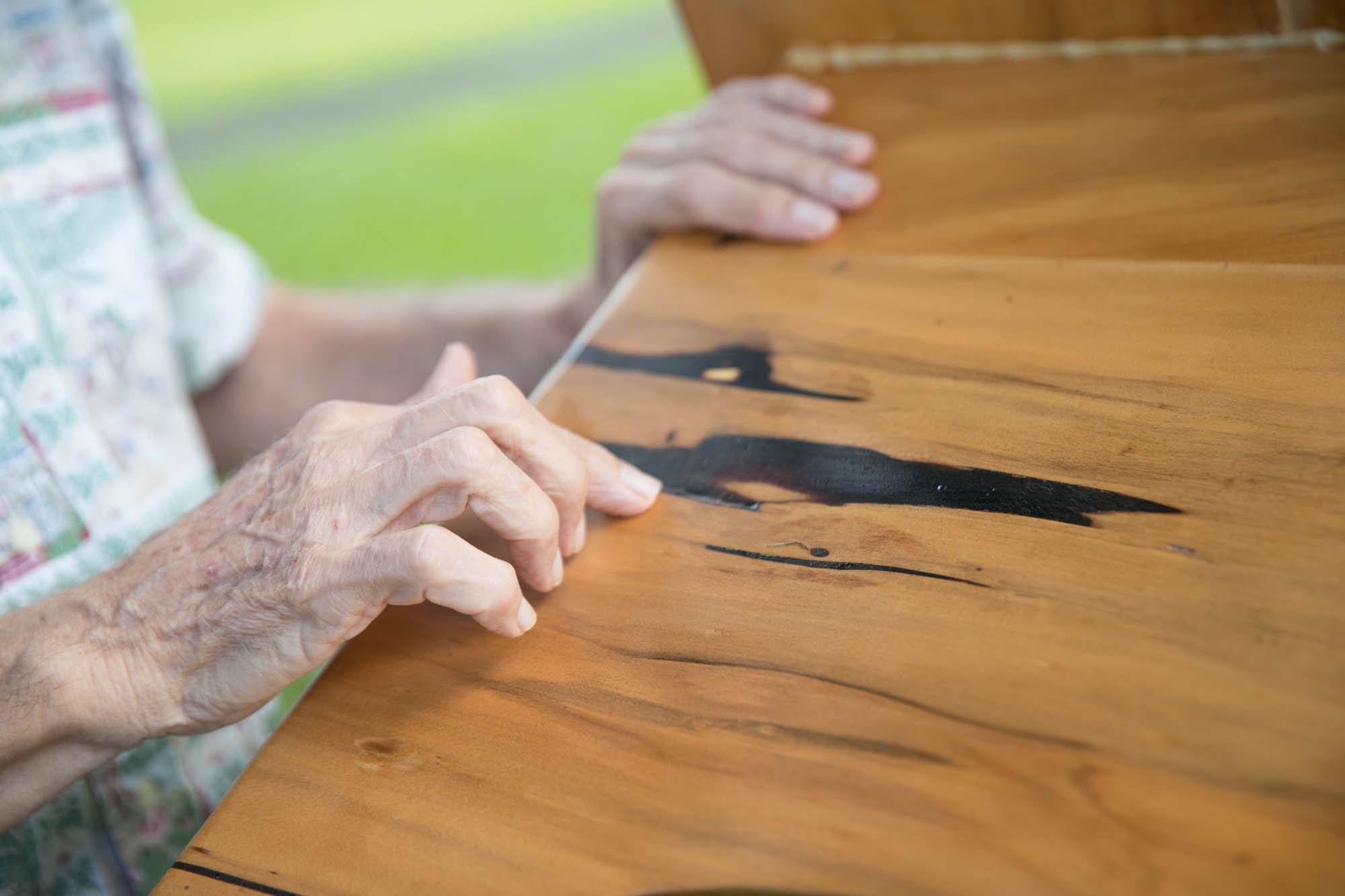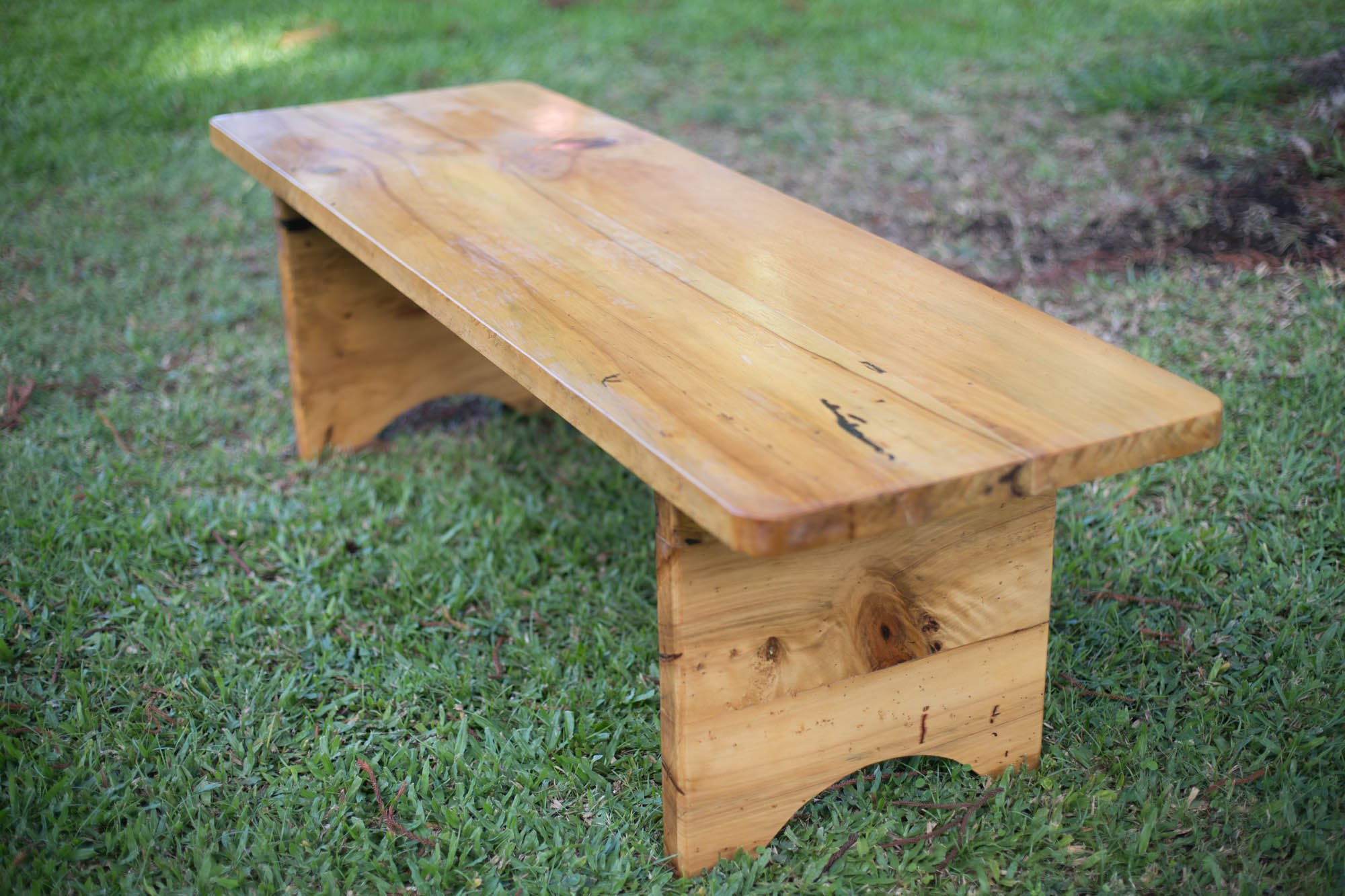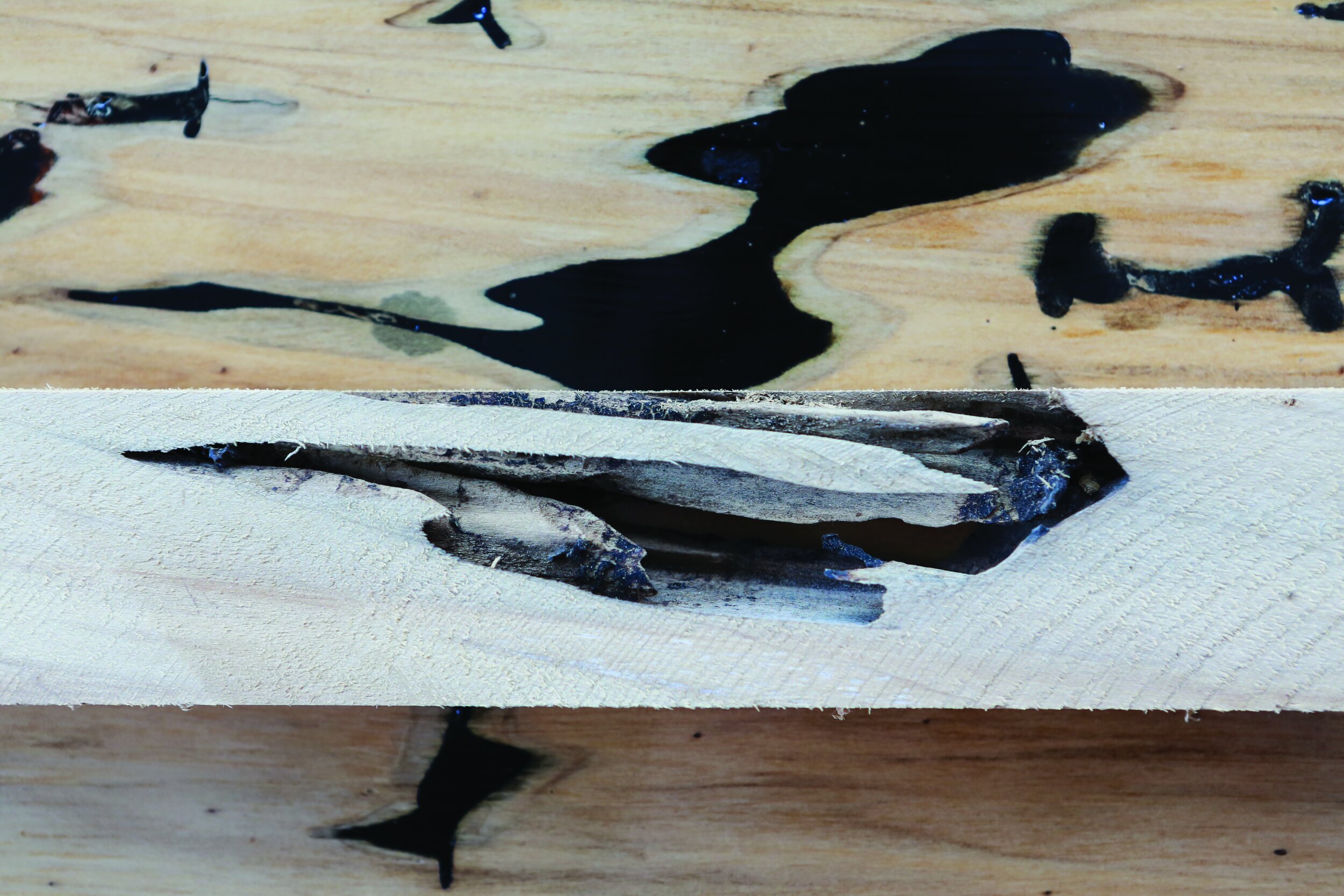Rooted in History





IN THE 1870S, TRAVELING AROUND THE ISLAND OF O‘AHU WAS SLOW, DELIBERATE AND ACCOMPLISHED ONLY BY CARRIAGE OR ON HORSEBACK. UNLIKE OUR MODERN TIMES, NO PALI HIGHWAY PROVIDED A QUICK AUTOMOBILE ROUTE BETWEEN KAILUA AND HONOLULU. On the other hand, the slower methods of travel, by carriage or on horseback, may have been far more enriching— offering views of the island not often enjoyed in our modern world—or so Dr. Paul Brennan suggests as he tells the story of groves of royal trees in Maunawili Valley still offering up history and providing the raw material to create new, historic treasures—with one such treasure being carved by Brennan for Iolani Palace, the home of Hawai‘i’s last reigning monarch.
Brennan, born in Ohio, learned the skills of woodworking as he was growing up, inspired by his grandfather. His first tools were a saw and a hammer and his toolbox grew as he did. That began his lifelong passion for wood. As a teenager he made shelves and little pieces of furniture. His inspiration led him beyond utilitarian work to an artistic excursion where he often lost track of time. As a young carver he carved the lines of the Psalms ‘Be Still, Fear Not’ in Greek. He calls himself a linguist who carves wood.
Brenann has a vast knowledge of linguistics, cultures and flora and fauna of the world. The linguist, along with his wife Dorothy and six children, lived for 13 years in Papua New Guinea, where he was an advisor to the Prime Minister. On his way back to the East Coast, he stopped in Hawai‘i. Forty years and two PhDs later—with years of work at East-West Center— he’s still here. Recruited by the Bishop Museum in 1986 he became part of an archeological team to study Maunawili. His work included the discovery of the valley’s royal history, described in the book Kailua, along with stories about the sugar mill, active until 1942.
As he tells the story, in the 1860s Hawai‘i’s Princess Ka‘iulani, niece of Queen Lili‘uokalani, would ride from Honolulu via horseback, all the way around the island, through what is now Hawai‘i Kai, and on through Waimanalo and Kailua to Maunawili Valley to enjoy the hospitality of the Boyd family at their home in the valley. In 1878, on one of her visits, the queen witnessed two young lovers bidding each other farewell, inspiring her to pen the beloved classic Hawaiian song, “Aloha ‘Oe.”
Fast forward to recent times. Brennan’s years in the valley led to the discovery of two large trees, planted in 1870, at the end of the carriage way. He says with amazement in his voice, “they were 144 feet tall and 130 years old!” Called Hoop Pines, the trees were found as far away as Northern Queensland in Australia. In the era of Hawaiian royalty, the wood was used for many things, including thin strips being cut and easily bent to hold the circle shape needed for the women’s “hoop skirts” so popular in the era of royal festive events in Iolani Palace—home to Hawai‘i’s monarchs. One Hoop Pine—a sister tree to those found at the Maunawili property the Queen visited those many years ago— grows on the grounds of the palace. At one time it was decorated for Christmas but now it is part of the royal story told by docents.
Brennan says the Maunawili trees, Araucaria Cunninghamii, were infested with termites when he, in 1999, approached the land management staff about the trees. The trees were felled, and “I asked if the foundation [that managed the land] wanted the wood,” Brennan says. The foundation instead gave Brennan permission to rescue the wood, which he had cut, hauled to his Kailua home, treated for termites and then milled. As he carved benches, they found homes—two were purchased by Alexander & Baldwin for its Kailua Town Lauhala Shops entryway where they are often photographed by visitors. Each bench is a sculptural masterpiece. The flow of the woodgrain, hand-rubbed and sealed, encourages the urge to “just sit for awhile.”
Brennan has been “in love with tropical woods” since his first encounter with a monkeypod tree as a 19-year-old student visiting Hawai‘i.
“I’ve worked with many woods but I really enjoy working with the Hoop Pine,” he says. It doesn’t have as many knots as the Norfolk Pine and when it is carved and polished it actually shines with a soft glow.”
The bench is carved, and as of this writing, is at the palace becoming acclimated to the air conditioning. It will soon move into its permanent home—the Imprisonment Room where Queen Lili‘uokalani was held when foreign businessmen overthrew the Hawaiian Monarchy. Brennan says he got into a zone as he carved, knowing his artistry was honoring Hawai‘i’s queen.
The bench is unique for a myriad reasons: it has a direct connection to a place where the queen wrote her beloved song, it’s made of wood from a sister pine to a tree currently found on the palace grounds and it is one place that guests will be allowed to sit when inside the palace.
Most of the other artifacts—furniture included, is for viewing only—except the Hoop Pine bench in the Imprisonment Room.
Brennan says, “learning the facts of the overthrow and imprisonment of Queen Lili‘uokalani is sometimes overwhelming to guests. The bench will be there to allow a bit of rest, a moment to contemplate Hawai‘i’s history and pay respects to the queen.”
Brennan says he spends time with the wood—you might even say he lets the wood tell him what it wants to be. One could say that, for this Hoop Pine bench, its story has come full circle.
